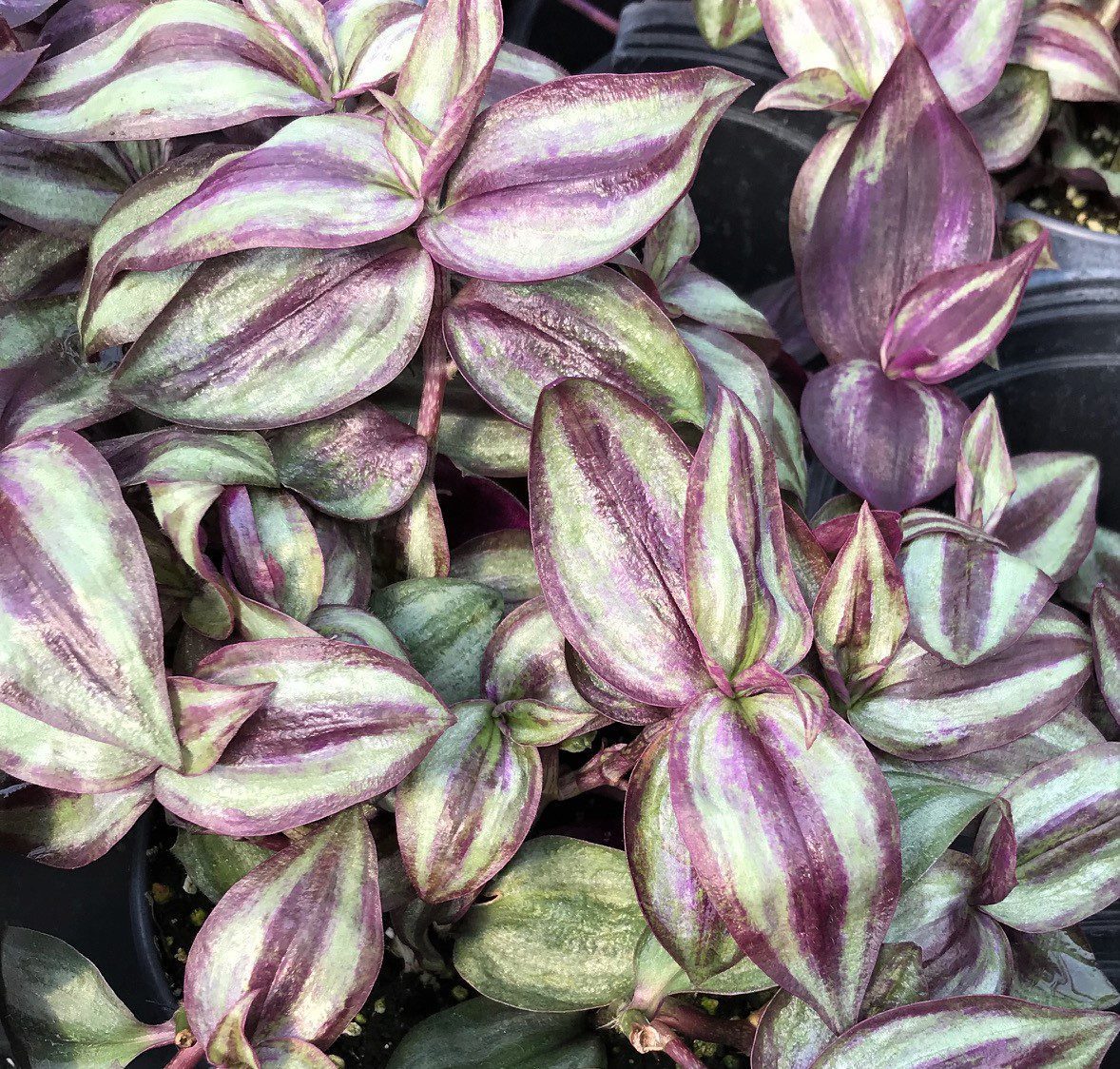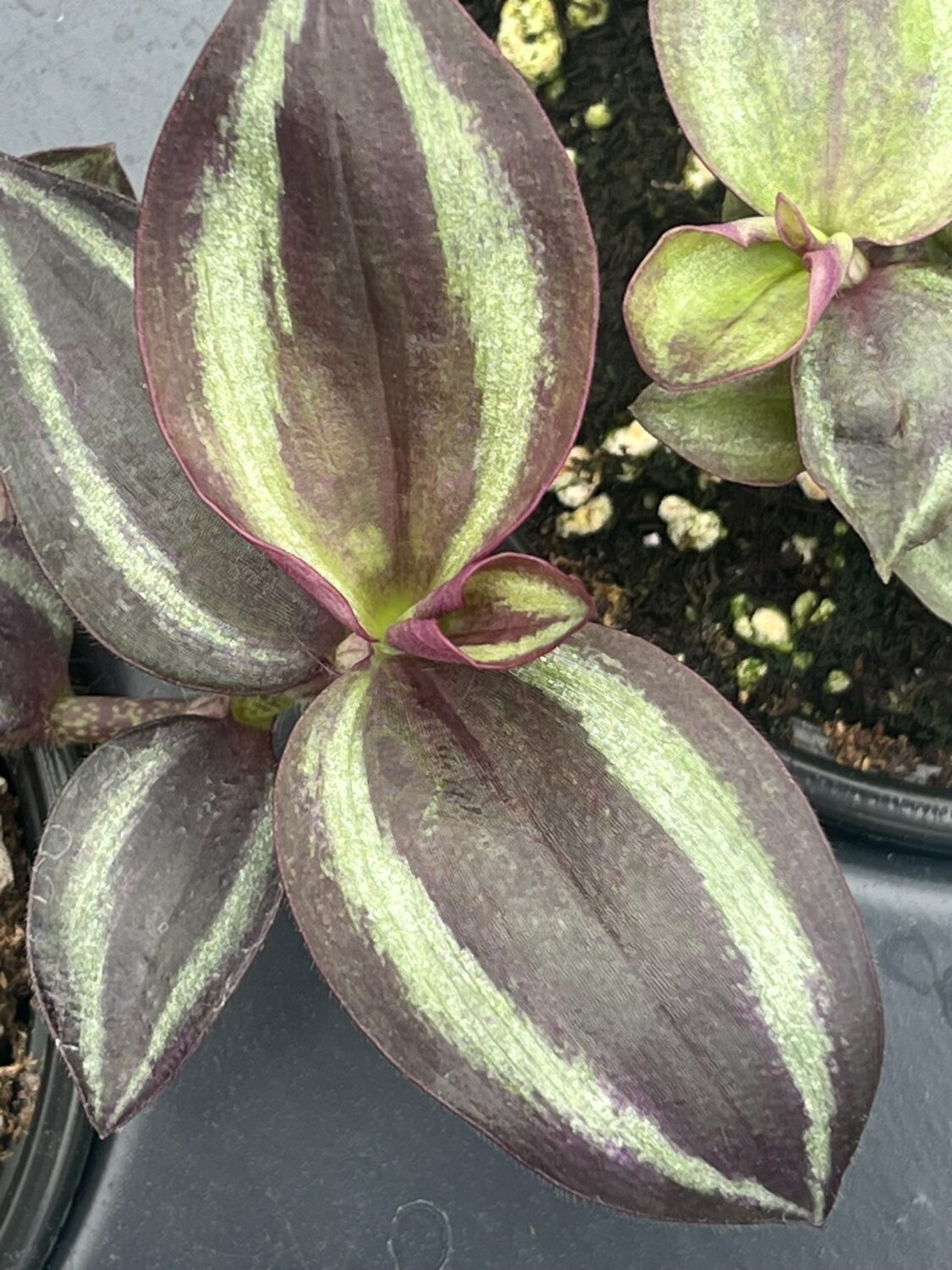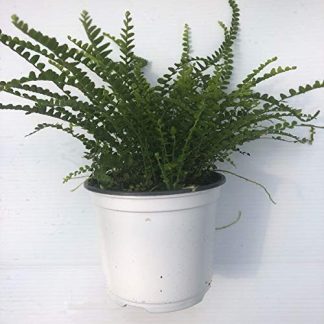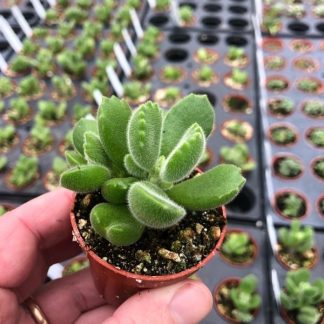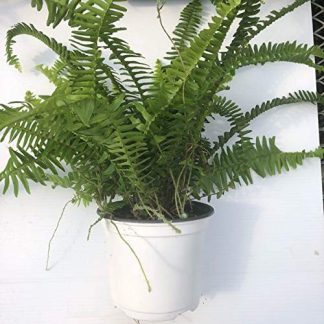Description
Tradescantia zebrina ‘Wandering Jew Purple’: A Bold Classic for Gardens and Homes
There is something timeless about a plant that can brighten a windowsill, drape beautifully from a hanging basket, or transform a quiet corner of a garden into a vibrant focal point. Tradescantia zebrina ‘Wandering Jew Purple’ is exactly that plant. With its shimmering stripes, cascading habit, and striking shades of purple, this tropical gem has charmed gardeners and plant lovers for generations.
In this deep dive, we explore everything that makes Wandering Jew Purple an enduring favorite. We will look at its origins, why it thrives so well indoors and outdoors, how to care for it, and the many ways to incorporate it into your own green spaces.
A Plant That Captures the Eye
The leaves of Wandering Jew Purple are unmistakable. Each lance-shaped leaf is adorned with bold stripes of silver and deep purple, with the underside glowing in vivid magenta tones. This dual-color effect means the plant looks alive with movement, especially when its trailing stems sway in a breeze or spill gracefully over the edges of containers.
This variety is a tropical perennial, originally native to Mexico and Central America, where it grows in warm, humid conditions as ground cover. Its natural adaptability allows it to thrive in home environments as a houseplant or as a colorful addition to shaded garden beds.
Why Gardeners Love Wandering Jew Purple
The appeal of Tradescantia zebrina ‘Purple’ lies in its versatility. It offers something for everyone—beginners looking for a forgiving plant, collectors seeking vibrant foliage, and designers wanting bold textures for mixed arrangements.
- Fast Growth and Trailing Habit
This plant grows quickly, forming long, trailing stems that create a lush curtain of color. It is perfect for hanging baskets, tall planters, and window boxes where its vines can cascade freely. - Year-Round Color
Unlike many flowering plants that shine only in certain seasons, Wandering Jew Purple keeps its vibrancy all year, even indoors. - Easy Care
It tolerates some neglect, bounces back from pruning, and thrives in basic household conditions. - Adaptable Indoors and Outdoors
Indoors, it serves as a vibrant houseplant; outdoors, it works as ground cover or a spiller in mixed containers.
Light Requirements
Bright, indirect light is where this plant truly shines. In these conditions, the purple and silver tones are most vivid. It can survive in medium light, but the colors will be less intense and the growth more sparse. Outdoors, it does best in partial shade—enough light to keep its colors bold, but sheltered from harsh, direct midday sun that may scorch the leaves.
Watering Needs
The watering needs are simple but important. Keep the soil evenly moist but never soggy. Overwatering can lead to root rot, while letting it dry out too much may cause the leaves to crisp. A good rule is to water when the top inch of soil feels dry. In winter, when growth slows, reduce watering slightly.
Soil Preferences
Well-draining soil is essential. A standard potting mix blended with perlite or coarse sand works well. For outdoor planting, amend garden soil with compost and sand to improve drainage. Tradescantia zebrina is not overly picky about soil pH, making it an easy fit in most settings.
Humidity and Temperature
Because this plant is tropical, it appreciates moderate to high humidity. Indoor growers can boost humidity with a pebble tray or occasional misting, though it also tolerates average household air. The ideal temperature range is between 60°F and 80°F. It will not survive frost, so in cooler climates, it must be grown indoors or brought inside during cold months.
Feeding for Vibrant Growth
During spring and summer, feed every four to six weeks with a balanced liquid houseplant fertilizer diluted to half strength. This keeps growth vigorous and foliage colors rich. In fall and winter, feeding can be reduced or stopped entirely as growth slows.
Pruning and Maintenance
Wandering Jew Purple grows quickly, and its stems can become leggy if not maintained. Pinching back tips encourages bushier growth and prevents the plant from becoming straggly. These cuttings can easily be rooted in water or soil, making propagation simple and rewarding.
Regular pruning also refreshes older plants, as the lowest leaves sometimes age and drop off, leaving bare stems. Cutting these back allows new growth to emerge more densely.
Propagation: Expanding Your Collection
One of the joys of Tradescantia zebrina is how easily it propagates. Snip a few inches of stem with at least one node and place it in water or directly in moist soil. Roots appear quickly, often within a week. This makes it easy to share with friends, refresh old plants, or create fuller arrangements by planting multiple cuttings in one pot.
Outdoor Uses in Warm Climates
In USDA Zones 9–11, Wandering Jew Purple can be grown outdoors year-round. It serves as an attractive ground cover under trees or along shaded pathways, where its color creates striking contrast against green foliage. It also works beautifully in mixed containers, spilling dramatically over the sides to soften edges and add depth.
Gardeners in colder zones can treat it as an annual, planting it outside in spring and bringing cuttings indoors for winter.
Indoor Styling Ideas
Indoors, this plant is a natural for hanging baskets, where its vines can cascade freely. It also works well on shelves, plant stands, or window ledges where the trailing growth can frame a space. Combine it with upright plants for striking contrast—pair it with snake plants, pothos, or ferns for a lush, layered display.
Common Problems and Easy Fixes
Though easy to grow, Wandering Jew Purple can face a few common issues:
- Leggy Growth: Caused by insufficient light. Move it to a brighter location and prune to encourage fullness.
- Faded Color: Often due to low light or nutrient deficiencies. Provide better lighting and feed during the growing season.
- Root Rot: From overwatering or poorly draining soil. Allow soil to dry slightly between waterings and use pots with drainage holes.
- Pests: Occasionally susceptible to spider mites or aphids. A gentle rinse or insecticidal soap usually resolves infestations.
A Plant With Rich History
While many know Tradescantia zebrina simply for its beauty, it also carries cultural history. In parts of Central America, it has been used in traditional medicine for its reported anti-inflammatory properties. In modern times, it is mostly celebrated as an ornamental, loved by collectors for its striking colors and vigorous growth.
Why It Belongs in Your Collection
Few plants offer the instant color, ease of care, and versatility of Wandering Jew Purple. It grows fast, propagates easily, and thrives in spaces where other plants might struggle. Its cascading vines soften hard lines in home décor, while its shimmering leaves add depth and interest. Whether grown indoors as a houseplant or outdoors in a shaded garden, it rewards minimal effort with maximum impact.
Bringing Wandering Jew Purple Into Your Space
Adding Tradescantia zebrina ‘Purple’ to your home or garden is simple. Choose a bright spot out of harsh direct sun, plant in well-draining soil, water when the top inch dries out, and enjoy the vibrant show of purple and silver foliage. Prune and propagate regularly to keep it looking its best and to multiply your collection.
With its resilience, beauty, and charm, this plant continues to win hearts everywhere. It reminds us that even the simplest care can lead to extraordinary results—a living tapestry of color and texture that grows more rewarding with every passing season.
Welcoming Color That Lasts
Bringing home Wandering Jew Purple means more than just adding a plant. It is inviting a piece of living art into your everyday life. It brightens windows, softens corners, and creates movement and vibrancy no matter where it grows. For gardeners and plant lovers alike, few plants capture the joy of color and simplicity quite like this beloved classic.

